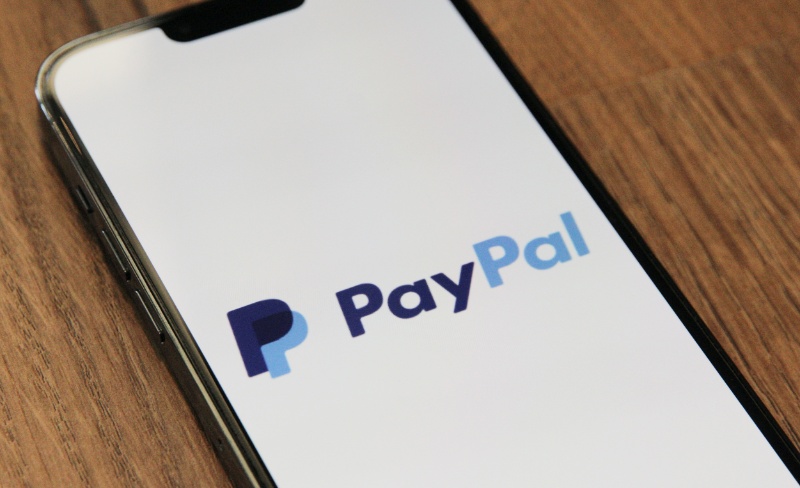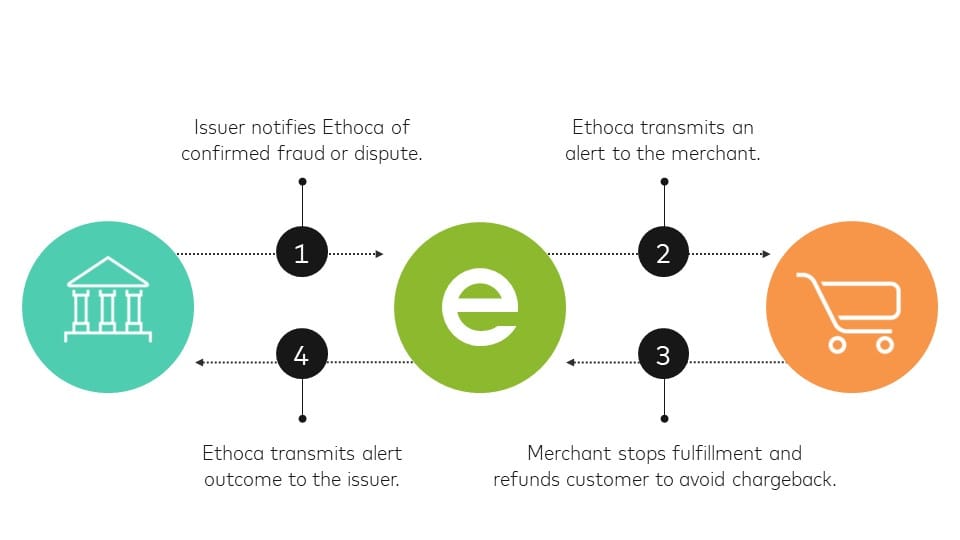
Are you a business owner or service provider looking to streamline your payment processes and enhance customer convenience? Look no further than PayPal's recurring payment feature. In this blog post, we will dive into the world of recurring payments on PayPal, exploring the basics, benefits, and security measures associated with this feature. Additionally, we will guide you through the step-by-step process of setting up recurring payments on PayPal, as well as managing and monitoring them effectively. And don't worry, we've got you covered with troubleshooting common issues as well. So, let's get started and unlock the power of recurring payments on PayPal!
Understanding Recurring Payments: The Basics
Recurring payments are a convenient and efficient way to automate regular transactions, allowing businesses to collect payments from customers on a recurring basis. With PayPal's recurring payment feature, you can create a payment profile that automatically charges your customers at specified intervals, such as weekly, monthly, or annually.
But before we delve into the setup and management of recurring payments on PayPal, it's important to understand the fundamentals. Let's explore the key aspects of recurring payments:
1. What are Recurring Payments?
Recurring payments, also known as subscription payments or recurring billing, are transactions that occur on a regular basis without requiring manual intervention from the customer. This payment model is commonly used for services or products that require ongoing payments, such as software subscriptions, membership fees, or monthly service charges.
2. How Do Recurring Payments Work?
When a customer agrees to a recurring payment arrangement, they authorize the merchant to charge their payment method automatically at pre-determined intervals. PayPal securely stores the customer's payment details, ensuring a seamless and hassle-free payment experience for both parties involved.
3. Benefits of Recurring Payments
Recurring payments offer several advantages for businesses and customers alike:
Improved cash flow: By automating payments, businesses can ensure a steady stream of revenue, reducing the need to chase after customers for payments manually.
Convenience and flexibility: Customers can enjoy the convenience of automatic payments without the hassle of remembering due dates or initiating transactions manually each time.
Enhanced customer retention: For businesses offering subscription-based services, recurring payments help cultivate long-term customer relationships, promoting loyalty and reducing churn rates.
Time and cost savings: Automating payment processes frees up valuable time and resources that can be allocated to other business operations, such as customer service or product development.
Now that we have a solid understanding of the basics of recurring payments, let's explore why PayPal is an excellent choice for setting up and managing this payment model.

Why Use PayPal for Recurring Payments
PayPal is widely recognized as a trusted and secure online payment platform, with millions of users worldwide. When it comes to setting up recurring payments, PayPal offers a range of benefits and features that make it an ideal choice. Let's explore why PayPal is a popular option for businesses and customers alike:
1. Ease of Use
PayPal's user-friendly interface and intuitive navigation make it easy for businesses to set up and manage recurring payments. The platform provides clear instructions and step-by-step guidance throughout the process, ensuring a smooth experience for users, regardless of their technical expertise.
2. Wide Customer Base
One of the key advantages of using PayPal for recurring payments is its extensive customer base. PayPal is a globally recognized and trusted payment method, which means customers are more likely to have an existing PayPal account or be comfortable using PayPal for transactions. This broad reach can help businesses attract and retain customers who prefer the convenience and security of PayPal.
3. Multiple Payment Options
PayPal supports various payment methods, including credit cards, debit cards, and bank transfers. This flexibility allows businesses to cater to a wide range of customer preferences and ensures a seamless payment experience. Customers can choose the payment method they are most comfortable with, enhancing customer satisfaction and reducing barriers to completing recurring payments.
4. Security Measures
Security is a top priority for PayPal. The platform implements robust security measures, including encryption and fraud detection systems, to protect customer data and prevent unauthorized access. By utilizing PayPal for recurring payments, businesses can provide their customers with peace of mind, knowing that their payment information is safeguarded against potential threats.
5. Integration with E-commerce Platforms
PayPal offers seamless integration with popular e-commerce platforms, such as Shopify, WooCommerce, and Magento. This integration simplifies the setup process for businesses already using these platforms, allowing for a seamless transition into implementing recurring payments. Additionally, PayPal provides APIs and developer tools for custom integrations, ensuring compatibility with various systems and workflows.
With these compelling reasons to choose PayPal for recurring payments, businesses can leverage the platform's features and benefits to enhance their payment processes and provide a seamless experience for their customers. Now that we understand why PayPal is an excellent option, let's dive into the process of setting up recurring payments on PayPal.
Setting Up Recurring Payments on PayPal
Setting up recurring payments on PayPal is a straightforward process that involves a few simple steps. In this section, we will guide you through the process, from preparing your account to activating the recurring payment. Let's get started:
1. Preparation Steps
Before setting up recurring payments on PayPal, there are a few important steps to take:
a. Verify Your PayPal Account
Ensure that your PayPal account is verified. Verification helps establish trust and credibility, both for your business and customers. To verify your account, follow the instructions provided by PayPal, which usually involve confirming your email address, linking a bank account, and providing additional identification if required.
b. Set Up a Business Account
If you haven't already, upgrade your PayPal account to a Business account. A Business account provides access to additional features and customization options specifically designed for businesses, including the ability to create and manage recurring payments.
c. Determine Your Pricing and Payment Terms
Decide on the pricing structure and payment terms for your recurring payments. Consider factors such as the frequency of payments, billing cycles (monthly, quarterly, annually), and any introductory offers or discounts you may want to include.
2. Creating a Recurring Payment Profile
Once you've completed the preparation steps, you can proceed to create a recurring payment profile on PayPal. Here's how:
a. Log in to Your PayPal Account
Access your PayPal account by visiting the PayPal website and logging in with your credentials.
b. Navigate to the Recurring Payments Section
Locate the "Recurring Payments" or "Subscriptions" section in your PayPal account. The exact location may vary depending on the interface, but it is typically found under the "Profile" or "Tools" tab.
c. Create a New Recurring Payment Profile
Click on the option to create a new recurring payment profile. You will be prompted to provide relevant details, such as the name of the product or service, pricing information, billing frequency, and any trial periods or special offers.
d. Customize Your Recurring Payment Profile
Tailor your recurring payment profile to meet your specific requirements. PayPal offers various customization options, such as allowing customers to modify or cancel their subscriptions, specifying the duration of the recurring payments, and setting up email notifications for payment-related activities.
3. Activating the Recurring Payment
After creating your recurring payment profile, it's time to activate it to start collecting payments from your customers. Follow these steps:
a. Review and Confirm the Details
Carefully review all the information entered in your recurring payment profile, ensuring accuracy and completeness. Make any necessary adjustments or edits before proceeding.
b. Save and Activate the Profile
Click on the "Save" or "Activate" button to finalize the setup of your recurring payment profile. PayPal may require additional confirmation or verification steps at this stage, such as re-entering your account password or providing a security code sent to your registered phone number or email address.
c. Test the Recurring Payment
Before rolling out your recurring payment option to customers, consider conducting a test transaction to ensure everything is functioning as expected. This step allows you to identify any potential issues or errors and make necessary adjustments before accepting live payments.
Congratulations! You have successfully set up a recurring payment profile on PayPal. In the next section, we will explore how to effectively manage and monitor your recurring payments using PayPal's features and tools.
Managing and Monitoring Your Recurring Payments
Once you have set up recurring payments on PayPal, it's crucial to effectively manage and monitor them to ensure smooth operations and customer satisfaction. In this section, we will explore the key aspects of managing and monitoring your recurring payments using PayPal's features and tools. Let's dive in:
1. Understanding Your Recurring Payments Dashboard
PayPal provides a user-friendly dashboard that allows you to gain insights and control over your recurring payments. Here are some important features and functionalities to be aware of:
a. Overview of Active Subscriptions
The dashboard provides an overview of all your active subscriptions, including details such as the subscriber's name, payment frequency, and next billing date. This enables you to have a comprehensive view of your recurring payment landscape.
b. Reporting and Analytics
PayPal offers reporting and analytics tools to track the performance of your recurring payments. You can access data on revenue, churn rates, and customer retention, enabling you to make informed decisions and optimize your subscription-based business model.
c. Customer Management
The dashboard allows you to manage your subscribers' information, such as updating their payment details, modifying subscription plans, or canceling subscriptions upon customer request. This level of control helps you provide excellent customer service and address any issues promptly.
2. How to Modify a Recurring Payment
Occasionally, you may need to make changes to the terms or details of a recurring payment. PayPal makes it easy to modify existing subscriptions. Here's how:
a. Access Your Recurring Payments Dashboard
Log in to your PayPal account and navigate to the recurring payments section or subscriptions dashboard.
b. Locate the Subscription to Modify
Find the specific subscription you want to modify, either by searching for the customer's name or by browsing through your list of active subscriptions.
c. Edit the Subscription Details
Select the subscription you wish to modify and click on the appropriate option to edit the subscription details. You can make changes to the payment amount, billing frequency, trial periods, or any other relevant parameters.
d. Save and Confirm Changes
After making the necessary modifications, save the changes and confirm them. PayPal may require additional verification steps to ensure the security and integrity of the process.
3. How to Cancel a Recurring Payment
There may be instances where customers request to cancel their recurring payments. PayPal allows you to handle cancellations efficiently. Here's what you need to do:
a. Locate the Subscription to Cancel
Access your recurring payments dashboard and locate the subscription that needs to be canceled.
b. Initiate the Cancellation Process
Select the subscription and choose the option to cancel or stop the recurring payment. PayPal may prompt you to confirm the cancellation and provide any necessary information or instructions to complete the process.
c. Communicate with the Customer
Once you have canceled the recurring payment, it is essential to communicate with the customer to confirm the cancellation and address any questions or concerns they may have. Prompt and clear communication helps maintain good customer relationships.
By effectively managing and monitoring your recurring payments, you can ensure a seamless experience for your customers and maintain control over your payment processes. In the next section, we will address common issues that may arise with PayPal recurring payments and provide troubleshooting tips to resolve them.
Troubleshooting Common Issues with PayPal Recurring Payments
While PayPal's recurring payment feature is generally reliable and efficient, there may be instances where you encounter common issues or challenges. In this section, we will address some of these issues and provide troubleshooting tips to help you resolve them effectively. Let's dive in:
1. Recurring Payment Failed
If a recurring payment fails, it can be due to various reasons, such as insufficient funds, expired credit cards, or issues with the customer's PayPal account. Here's what you can do to troubleshoot this issue:
a. Verify Payment Method and Account Status
Ensure that the customer's payment method, such as their credit card or bank account, is valid, active, and has sufficient funds to cover the payment. Additionally, check if the customer's PayPal account is in good standing and not experiencing any limitations or restrictions.
b. Communicate with the Customer
Reach out to the customer and inform them about the failed payment. Advise them to update their payment method or resolve any issues with their PayPal account. Provide instructions on how they can update their payment information on their PayPal account or contact PayPal's customer support for assistance.
c. Retry the Payment
If the issue was temporary, such as a network glitch or a temporary hold on the customer's payment method, you can try to reattempt the payment. Inform the customer about the retry and ensure they are aware of the upcoming payment attempt.
2. Recurring Payment Charged Twice
Double charging can occur in rare cases, causing inconvenience and frustration for both you and your customers. Here's how you can troubleshoot this issue:
a. Verify the Double Charge
Confirm with the customer if they have indeed been charged twice for the same recurring payment. Sometimes, it may be a misunderstanding or confusion on the customer's part.
b. Refund the Duplicate Charge
If the double charge is confirmed, promptly refund the duplicate payment to the customer. PayPal provides a straightforward refund process that allows you to refund the transaction directly from your PayPal account.
c. Communicate with the Customer
Contact the customer and apologize for the inconvenience caused by the double charge. Assure them that the duplicate payment has been refunded and provide them with any necessary documentation or proof of the refund.
3. Customer Complaints and Refunds
Occasionally, customers may raise complaints or request refunds regarding recurring payments. It's essential to handle these situations promptly and professionally. Here's what you can do:
a. Listen to the Customer's Concerns
Give the customer an opportunity to express their concerns or dissatisfaction with the recurring payment. Listen attentively and empathize with their situation.
b. Review the Subscription Details and Payment History
Thoroughly review the subscription details, payment history, and any relevant communication or documentation to assess the validity of the customer's complaint or refund request.
c. Provide a Resolution
Based on your review, offer an appropriate resolution to address the customer's concerns. This could involve issuing a refund, adjusting the subscription terms, or providing additional support or compensation.
d. Document and Learn from the Experience
Keep a record of the customer's complaint, the resolution provided, and any learnings or insights gained from the experience. This documentation can help you improve your processes and customer service in the future.
By effectively troubleshooting common issues with PayPal recurring payments, you can maintain customer satisfaction, resolve problems efficiently, and ensure the smooth operation of your payment processes. With this comprehensive guide, you are equipped with the knowledge and tools to understand, set up, manage, and troubleshoot recurring payments on PayPal. Unlock the full potential of this feature and streamline your payment processes for your business's success!


